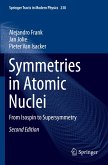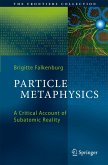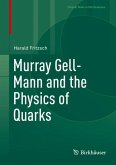Symmetries in Atomic Nuclei aims to present an overview of recent applications of symmetry to the description of atomic nuclei. Special care is given to a pedagogical introduction of symmetry concepts using simple examples. After a historical overview of the applications of symmetry in nuclear physics, progress in the field during the last decade is reviewed. Special emphasis is put on the introduction of neutron-proton and boson-fermion degrees of freedom. Their combination leads to a supersymmetric description of pairs and quartets of nuclei.
Both theoretical aspects and experimental signatures of dynamical (super)symmetries are carefully discussed. Case studies show how these symmetries are displayed by real atomic nuclei which have been studied experimentally using state-of-the art spectroscopy. This book focuses on nuclear structure physics and has been written by active investigators in the field, but its scope is wider and is intended for final-year or post-graduate students and researchers interested in understanding the power and beauty of symmetry methods in physics.
Both theoretical aspects and experimental signatures of dynamical (super)symmetries are carefully discussed. Case studies show how these symmetries are displayed by real atomic nuclei which have been studied experimentally using state-of-the art spectroscopy. This book focuses on nuclear structure physics and has been written by active investigators in the field, but its scope is wider and is intended for final-year or post-graduate students and researchers interested in understanding the power and beauty of symmetry methods in physics.
"The subject of this book, symmetries in physical systems, with particular focus on atomic nuclei, is of the utmost importance in modern physical science. In contrast to most treatments, frequently characterized by fearsome formalism, this book leads the reader step-by-step, in an easily understandable way, through this fascinating field. The volume starts from a beautiful and simple introduction to symmetry in the first chapter, stressing the deep relations between symmetry, degeneracies, quantum numbers, and selection rules, and systematically proceeds through the dynamical symmetries of the Interacting Boson Model, quantum phase transitions, a very nice discussion of partial dynamical symmetries (a topic of growing importance), intruder states, mixed symmetry states, bose-fermi models and, finally, to nuclear supersymmetry (different from the fundamental supersymmetry of particle physics). Throughout, the discussion makes frequent and detailed relation to real data in atomic nuclei where many of these concepts have received their most thorough vetting. Owing to the elegant pedagogical approach, this book is remarkably accessible to both theorists and experimentalists. Indeed, I view it as essential reading for experimental nuclear structure physicists. This is one of the finest volumes on this subject I have ever encountered."
Prof. R.F. Casten, Yale University
Prof. R.F. Casten, Yale University








